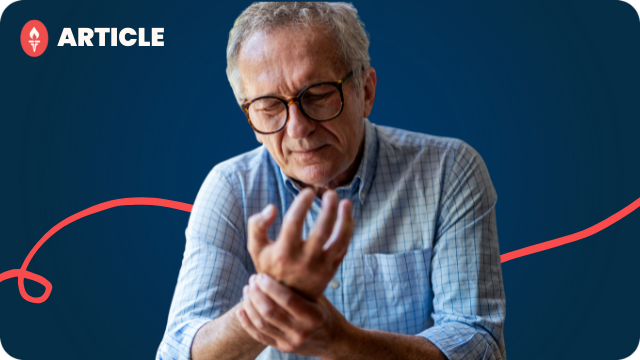I was recently talking with an older gentleman at my church discussing our various hobbies, but as he began to talk about his love of tennis, his face sort of dropped. “Damn arthritis,” he said. “Just can’t do what I used to on the court.”
He was specifically referring to osteoarthritis of his knee. While there are more than 100 types of arthritis, osteoarthritis is the most common. Also known as OA or degenerative joint disease, osteoarthritis occurs when the cartilage between joints wears down. It is often called the “wear and tear” disease, although it’s more than just “wearing down of your joints.” Other factors can contribute to the development of osteoarthritis, and we are seeing this in individuals younger and younger each year. Factors such as genes, weight, and overuse/repetitive motion can all play a role in the development of this condition.
Normally, the cartilage provides a cushion between our joints. But over time, overuse or misuse of this cartilage, or both, can in fact wear it down, causing the bones to rub against one another. As a result, joints become stiffer and more difficult, and painful to move. A person may notice a rubbing, grating, or crackling sound when the joint moves. Joint stiffness is often most noticeable upon waking up in the morning or after a period of inactivity. Other symptoms can include pain, tenderness, crepitus, bone spurs, loss of flexibility, or deformities of the joints. Osteoarthritis can cause many complications, and problems can occur in any joint, including the neck, shoulders, spine, hips, knees, and hands.
Physical and occupational therapy can help individuals by developing a safe exercise program to gently strengthen the muscles around the joints. This is extremely important since stronger muscles help to stabilize a weakened joint. Therapy can also increase a person’s range of motion and decrease their pain. Preserving a good range of motion and managing pain is key to being able to maintain the ability to perform daily activities.
By identifying causes, a person may be able to initiate behaviors that can reduce the risk of developing osteoarthritis altogether. However, if OA has already developed, working together between physician and patient with physical and occupational therapy will allow benefits improving quality of life and safety to become evident, allowing my fellow church-goer to serve a tennis ball, and others to live an active lifestyle.
Interested in learning more about how our wellness programs could impact the lives of seniors in your community? Click the button to connect with our business development team—they’d love to show how this portal can truly make a difference in your community.






